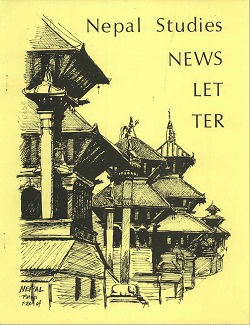Author Biography
Pasang Yangjee Sherpa (PhD, Anthropology, Washington State University, 2012) is the co-director of the Nepal Studies Initiative, University of Washington. She was a Lecturer in the Department of Anthropology at the Pennsylvania State University from 2013-2015, after which she was a postdoctoral fellow at The New School in New York City (2015-16). Her research areas include human dimensions of climate change, indigeneity, and development in the Himalaya.
Abstract
In this article, I examine how residents of the Mount Everest region of Nepal responded after two major earthquakes occurred on April 25th and May 12th, 2015. This article is based on my participant-observation of discussions among Sherpas, on-foot surveys of earthquake damage, and the experiences of residents, which I recorded in Pharak, between the two major seismic events. I also reviewed institutional activities and reports that pertained to the Everest region and spoke at length with other Sherpas. In these discussions, the boundaries of ‘community’ were both fluid and self-understood. A ‘sense of community’ and ‘resilience’ emerged as salient themes, and provided an analytical framework to understand the Sherpa communities’ responses to these earthquakes. The case studies presented herein are selected based on my direct engagement with them. The narratives present critical social responses to the process of relief and recovery and illustrate Sherpa resilience. ‘Resilience,’ as an analytical lens, also reveals the residents’ ambivalent attitudes about the situation. Although the community was highly aware of devastation and post-earthquake recovery needs, ‘external’ discussions of these topics were subdued. This article then addresses how ‘internal’ Sherpa discussions arose as a response to external portrayals of the Everest region, a popular tourism destination, as a ‘non-affected’ or ‘less-affected’ earthquake zone. Interactions and discussions that took place ‘externally’ were unidirectional and top-down, wherein the villagers were at the receiving end, and often absent. While internal discussions strengthened the community’s ability to rebuild itself, external discussions were instrumental in diverting large-scale relief and rebuilding assistance, not only from the region, but from the entire Solukhumbu district.
Acknowledgements
The author would like to thank the editors of HIMALAYA, Sienna Craig and Mark Turin, for their encouragement throughout the writing process, without which the article would not have existed. Revisiting the memories of devastation for this article was personally challenging. This article has also been possible because of the friends and relatives who shared their experiences, and continued support from Un Sherpa. Barbara Brower and Jim Fisher were extremely generous with their time and advice at different stages of developing this article. The author is responsible for any and all errors that remain.
Creative Commons License

This work is licensed under a Creative Commons Attribution-Noncommercial-No Derivative Works 4.0 License.
Recommended Citation
Sherpa, Pasang Y.. 2017. Community and Resilience among Sherpas in the Post-Earthquake Everest Region. HIMALAYA 37(2).
Available at:
https://digitalcommons.macalester.edu/himalaya/vol37/iss2/13


